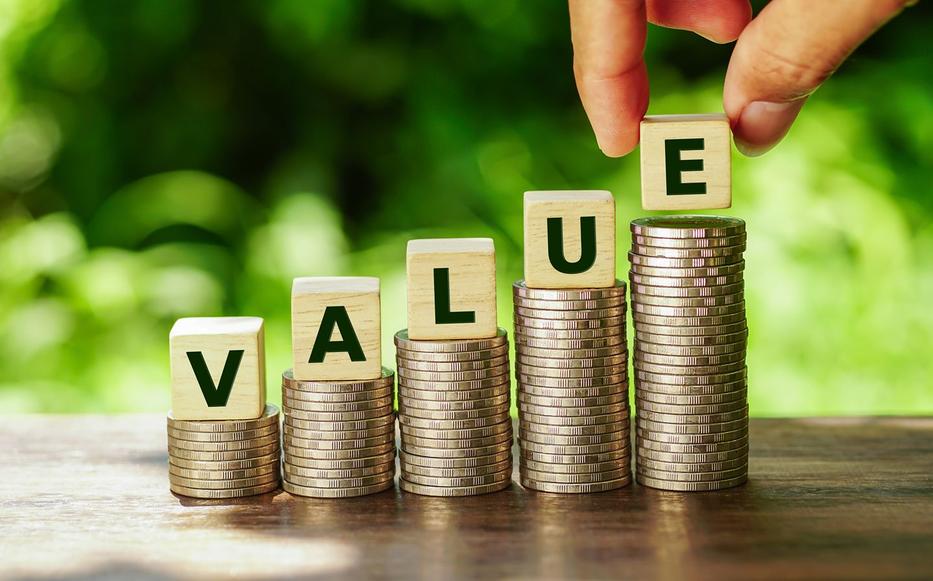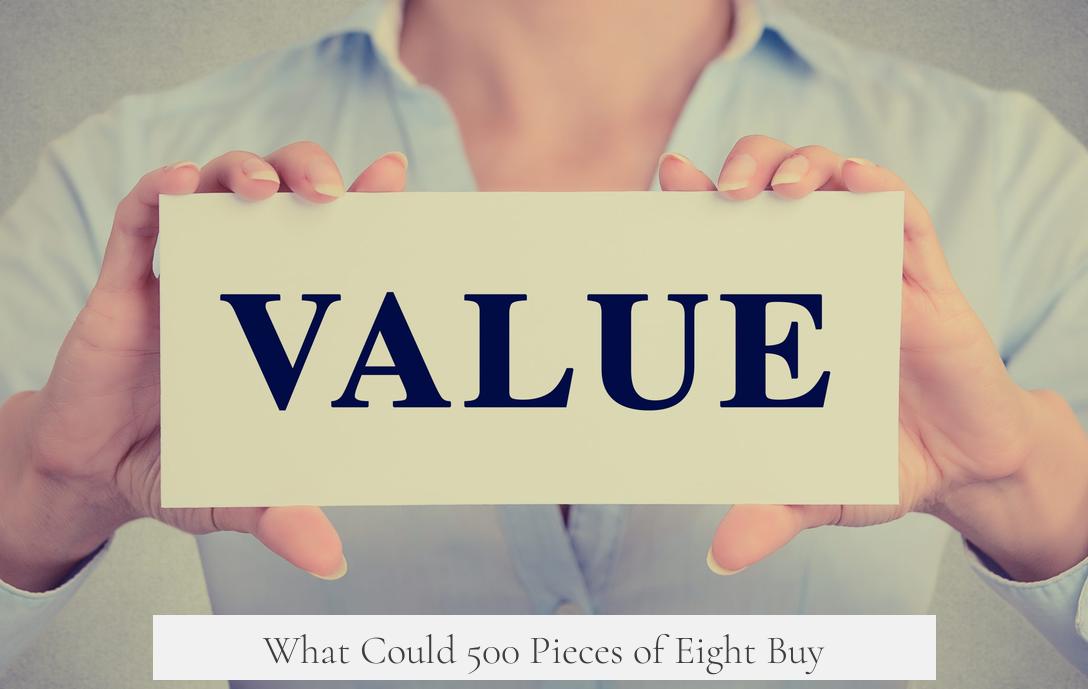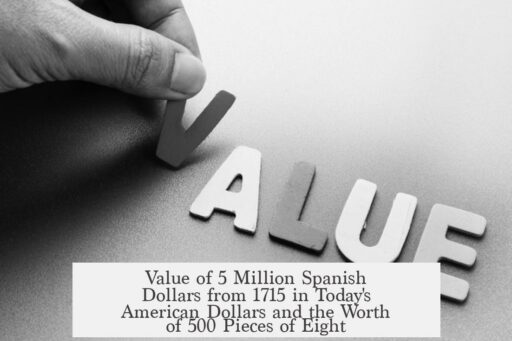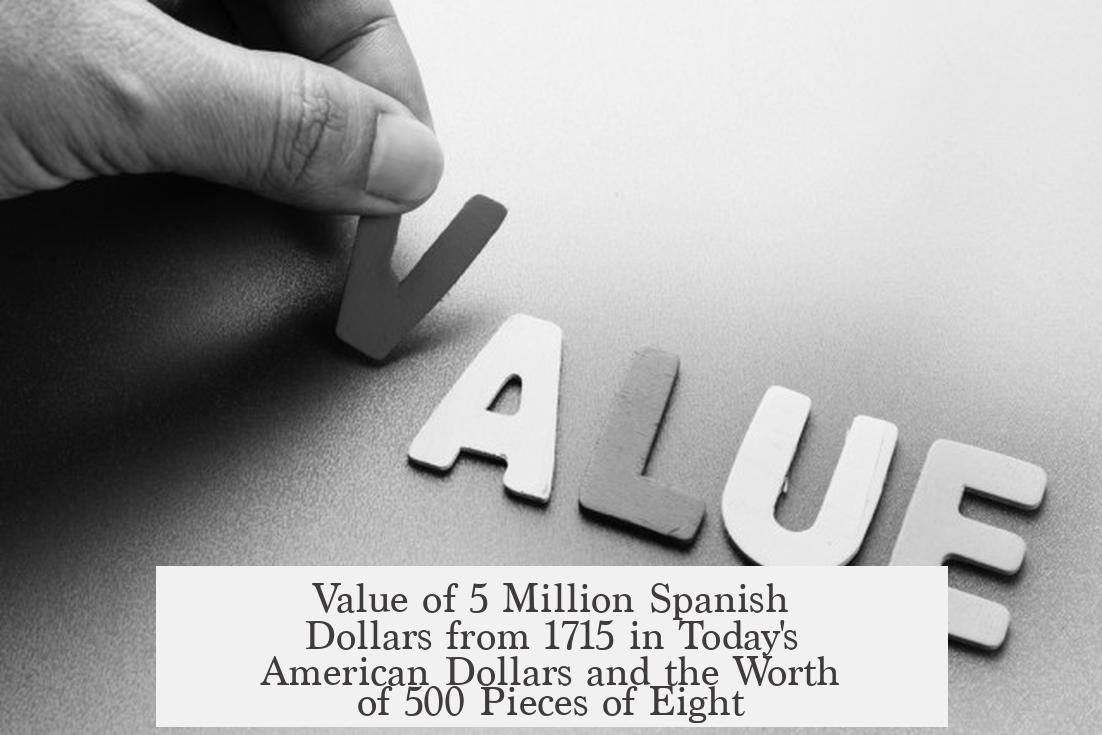5 million Spanish dollars in 1715 is worth approximately 250 million American dollars today. Similarly, 500 pieces of eight equate to about $25,000 in modern U.S. currency.
The “piece of eight” was a Spanish silver coin widely used in the early 18th century. It had a buying power roughly equivalent to $50 today. This value helps convert historical sums into contemporary figures.
To estimate the modern value of 5 million pieces of eight, multiply 5 million by $50. This calculation results in $250 million, indicating a massive fortune by both historical and current standards. Though large, this sum remains below a billion-dollar magnitude.
Regarding 500 pieces of eight, multiplying by $50 results in $25,000. Historical accounts confirm that pirates often spent about this much in reckless ways, such as on alcohol and women, in a single night. Such spending patterns are verified by original pirate chronicles.
- Captain Rock’s story from Alexandre Exquemelin’s account illustrates how buccaneers squandered large sums quickly through dice games, drinking, and other indulgences.
- One notable incident describes a man spending 500 pieces of eight on a woman to see her naked, highlighting extravagant pirate lifestyles.
- Another example shows a pirate who bought a cask of wine and forced every passerby to drink or face violent consequences, demonstrating the boisterous culture.
These details emphasize the purchasing power and social context of pieces of eight in the early 1700s, bridging historical currency to its value today.
| Amount (1715) | Value per Piece | Modern Equivalent (USD) |
|---|---|---|
| 5,000,000 pieces of eight | $50 | $250,000,000 |
| 500 pieces of eight | $50 | $25,000 |
The value conversion and related anecdotes offer a clear picture of Spanish dollars’ worth today. This insight applies to economic history, pirate lore, and currency analysis alike.
- One piece of eight in 1715 roughly equals $50 today.
- 5 million pieces of eight convert to about $250 million.
- 500 pieces of eight equal approximately $25,000 now.
- Pirates often spent 500 pieces of eight in extravagance quickly.
- Historical accounts support these conversion estimates and behaviors.
How Much Is 5 Million Spanish Dollars in 1715 Worth Today in American Dollars? And What About 500 Pieces of Eight?

Step back in time, and let’s unravel a treasure chest of history and economics. You’re probably curious: Exactly how much is 5 million Spanish dollars from 1715 worth in today’s American dollars? And while we’re at it, what’s the deal with 500 pieces of eight? Ready for this dive into the roaring 18th-century cash flow?
Let’s get to the treasure map’s X right away.
5 million Spanish dollars (pieces of eight) in 1715 roughly equal $250 million in today’s American dollars.
Yep, a quarter of a billion bucks! Now, before you start envisioning piles of gold bars, remember: it’s an estimate based on purchasing power and historical conversions.
How Did We Reach $250 Million?
A single piece of eight back then had the buying power equivalent to about $50 today. Multiply that by 5 million, and you get… well, that hefty $250 million sum. Not quite a billion, but still a fortune impressive enough to make even the richest modern tycoon blink.
And the 500 Pieces of Eight?
Applying the same principle, 500 pieces of eight would be about $25,000 today. That’s a significant amount but more relatable. Enough to fund a lavish party or buy a small yacht, perhaps. Pirates definitely knew how to throw down with such sums.
Pieces of Eight: Pirates’ Currency and Spending Habits
Ever wondered how a pirate lived it up on their loot? Thanks to the detailed writings of Alexandre Exquemelin, who chronicled the exploits of buccaneers, we know these seafarers had some wild spending sprees.
“Captain Rock sailed for Jamaica with his prize, and lorded it there — spending thousands of pieces of eight on indulgences like dicing, whoring, and drinking until nothing was left.”
Imagine burning through multiples of $25,000 in a single night! There’s also an infamous tale where a man gave 500 pieces of eight just to see a woman naked. That’s $25,000 on a whim. Talk about living large.
The television series Black Sails captures these stories accurately. The show references these extravagant and reckless pirate expenditures, highlighting that history can be just as dramatic as fiction.
What Could 500 Pieces of Eight Buy?

- A music lover might invest in a musket, costing between 5 pieces of eight to 3 pounds ($250–$600).
- A cutlass, essential for the pirate’s arsenal, went for around 6 shillings, which translates to a modest $60.
- If you fancied livestock, a head of cattle could cost approximately 4 or 5 pieces of eight — about $200 to $250.
- For those thirsty days, a gallon of rum was 4 shillings, or roughly $40.
With 500 pieces of eight (or $25,000 today), you could buy several muskets, dozens of gallons of rum, or a small herd of cattle. Not bad for a pirate’s plunder, right?
The Grandeur of 5 Million Pieces of Eight
Let’s take it up a notch. A massive 350-ton, 36-gun man-of-war frigate in the 18th century cost about 8,200 pounds, equating to $1.64 million today. Imagine owning several such ships with 5 million pieces of eight!
A small sloop (about 10 tons, basic sailboat) was priced at 30 pounds or approximately $6,000. This puts the staggering size of 5 million pieces of eight in perspective: it could buy hundreds of ships, arm them, and still leave enough for a pirate kingdom.
Economic Context: Currency and Buying Power
The piece of eight was a Spanish silver coin, widely used and accepted across continents in trade and piracy during the early 1700s. Its value was significant. In contrast, the British pound held the purchasing power of around $200 today, and a shilling was about $10.
Remember, currency values then were more about what they could buy rather than just exchange rates. So, when we say 5 million pieces of eight equal $250 million today, it’s about equivalent buying power—not just the raw silver content.
Practical Perspectives
What can we learn from this? If pirates like Captain Rock could blow through thousands of pieces of eight in days, they were likely poor managers of money but excellent party planners.
Also, 500 pieces of eight – much more than coinage – was a lifestyle marker. Contemporary accounts describe these sums as enough to satisfy wild nights or costly favors, reflecting societal dynamics and the high stakes of pirate life.
Why Should You Care About 5 Million Pieces of Eight Today?

Understanding old currency conversions reminds us how economic values shift. It puts into perspective the sheer scale of historic fortunes and the lifestyles built around them. Economics isn’t just about numbers; it’s about stories, power, and human behavior.
Plus, who doesn’t love imagining the pirate’s life—part danger, part decadence—all summed up by swapping pieces of eight for cold hard cash, or the modern equivalent.
Summary Table: Historical Prices vs. Modern Value
| Item | Cost in Pieces of Eight (c.1715) | Equivalent USD Today |
|---|---|---|
| One Piece of Eight | 1 | $50 |
| 500 Pieces of Eight | 500 | $25,000 |
| 5 Million Pieces of Eight | 5,000,000 | $250,000,000 |
| Adult Male Slave | 100 | $5,000 |
| Musket | 5 to 12 (pieces of eight or equivalent pounds) | $250 to $600 |
| Cutlass | 6 shillings | $60 |
| Small Sloop Sailboat (10 tons) | 30 pounds | $6,000 |
| Man-of-War Frigate (350 tons, 36 guns) | 8,200 pounds | $1,640,000 |
Final Thoughts
So next time you’re watching a pirate flick or reading about Spanish galleons, you’ll know what’s really behind the treasure chest. 5 million pieces of eight is a mind-boggling fortune today, but it also tells tales of splendor and recklessness. And 500 pieces of eight? Enough for a legendary night on the town.
Who knew economic history could feel so adventurous?
How much is 5 million Spanish dollars from 1715 worth in today’s American dollars?
5 million pieces of eight from 1715 is roughly equivalent to $250 million today. This calculation uses the estimated buying power of one piece of eight as about $50.
What is the value of 500 pieces of eight in modern American dollars?
500 pieces of eight would be about $25,000 today. Historical records show pirates spending this amount in a single night on alcohol and women.
Why could pirates spend 500 pieces of eight so quickly?
Contemporary accounts describe pirates using large sums fast. They spent on dicing, drinking, and women, often running through thousands of pieces of eight in days.
Is the value of one piece of eight always the same across history?
The value fluctuated with time and location. But for early 18th-century Spain, one piece of eight had an estimated buying power near $50 today.
Does the show Black Sails reflect real pirate spending habits?
Yes, it references historical pirate behavior accurately. Pirates often spent large fortunes recklessly, matching documented stories from the 1700s.


